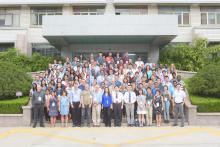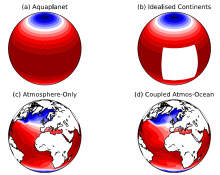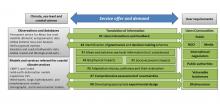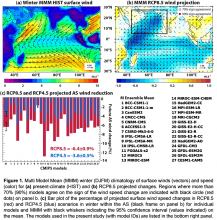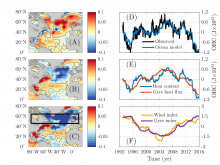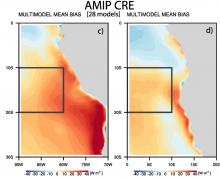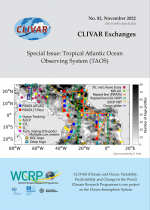Science Highlights
An early career perspective on the future of CLIVAR
Submitted by Jing Li on Tue, 2018-05-22 06:51The Early Career Scientists Symposium was held alongside the 2016 CLIVAR Open Science Conference in Qingdao, hosted by the First Institute of Oceanography. The Symposium aimed to capture the ideas of early career researchers on pressing science priorities, immediate challenges, and emerging opportunities to help guide the future evolution of CLIVAR. 135 early career scientist (ECS) from 34 countries traveled to Qingdao and discussed their vision for the future of CLIVAR.
Challenges and Opportunities for Improved Understanding of Regional Climate Dynamics
Submitted by Lei Han on Wed, 2018-05-09 10:06Ice-free Arctic projections under the Paris Agreement
Submitted by Lei Han on Sun, 2018-04-08 09:22Under the 2015 Paris Agreement, nations agreed to limit global mean warming to 2°C, while also working toward the more ambitious goal of limiting warming to 1.5°C. However, current pledges to support the Paris Agreement would only limit global warming to 3°C. Would meeting the Paris temperature goals be sufficient to avoid an ice-free Arctic?
Sea Level 2017 Conference Looks to Coastal Sea Level Rise Impact
Submitted by Lei Han on Thu, 2018-01-11 02:25Sea Level Change and Coastal Climate Services: The Way Forward
Submitted by Lei Han on Wed, 2017-10-18 15:47Projected response of the Indian Winter Monsoon Winds over the Arabian Sea to Climate Change
Submitted by Jing Li on Thu, 2017-10-12 11:19A recent study indicates a robust reduction of the Indian Winter Monsoon wind intensity over the Arabian Sea by the end of the 21st century in all the 27 analysed CMIP5 models (a reduction of 6.5% for Representative Concentration Pathways (RCP) 8.5 and 3.5% for RCP4.5, on an average), which is not yet detectable in observations.
What is responsible for recent decadal changes in the subpolar North Atlantic Ocean’s heat content?
Submitted by Nico on Mon, 2017-09-04 08:30Can the SST biases in coupled climate model simulations of the eastern tropical Atlantic and Pacific oceans be reduced?
Submitted by Jing Li on Tue, 2017-02-14 04:04Extended deadline to submit abstract for the Climate Prediction Applications Science Workhop 2017
Submitted by Harish on Fri, 2017-01-20 04:28Call for Abstracts






